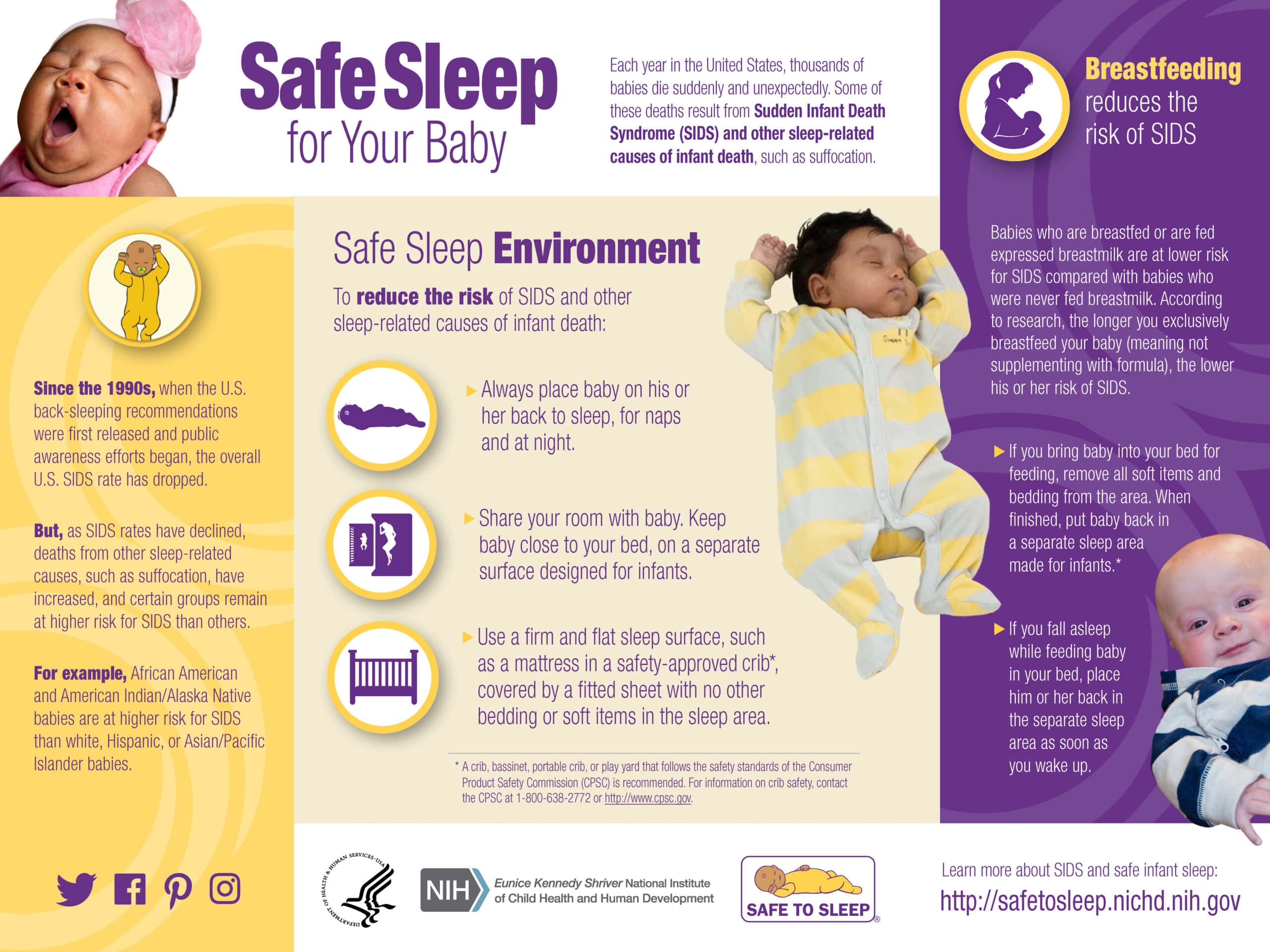We Support Safe Sleep for Infants
Sudden unexpected infant death (SUID, formerly known as SIDS) describes the sudden and unforeseen death of a baby younger than 1 year old when the cause is unknown. These deaths often happen while the baby is sleeping. An investigation often reveals that the baby was not able to breathe properly in their crib or other sleep setting.
Our hospitals are dedicated to the health and safety of our youngest patients and are proud to be Safe Sleep Hospitals. The National Safe Sleep Hospital Certification Program recognizes hospitals that have committed to making babies as safe as possible in their sleep settings and eliminating as many sleep-related deaths as possible.
How to create a safer sleep environment:
- Follow the ABCs of Safe Sleep:
-
- Alone – baby sleeps alone, without other objects, caregivers, or siblings
- Back – baby sleeps on his/her back
- Crib – baby sleeps on his/her own sleeping space, such as a crib or a bassinet
-
- Until their first birthday, place your baby on their back to sleep for naps and at night.
- Place your baby to sleep on a firm sleep surface covered by a fitted sheet.
- Room-sharing is recommended – keep baby’s sleep area in the same room where you sleep for at least the first six months, but do not let your baby sleep with you or anyone else in bed (co-bedding).
- If your baby falls asleep in a car seat, stroller or other carrier, move them to a firm sleep surface such as a crib, bassinet or portable crib for sleep.
- Never place your baby to sleep on a couch, sofa, or armchair.
- Keep soft objects such as pillows and blankets, toys and bumpers out of your baby’s sleep area.
- If you give your baby a pacifier, use one that is not attached to a string for naps and at night to decrease risk of choking or strangling.
- Breastfeed your baby (studies show babies who breastfeed have a lower risk for SUID).
Please visit Safe Sleep University – Safe Start (safestartnw.org) for more information about how to keep your infant sleeping safely, and you more peacefully.
For more information keeping your children safe at all ages and stages of life, please visit: Ages & Stages – HealthyChildren.org

